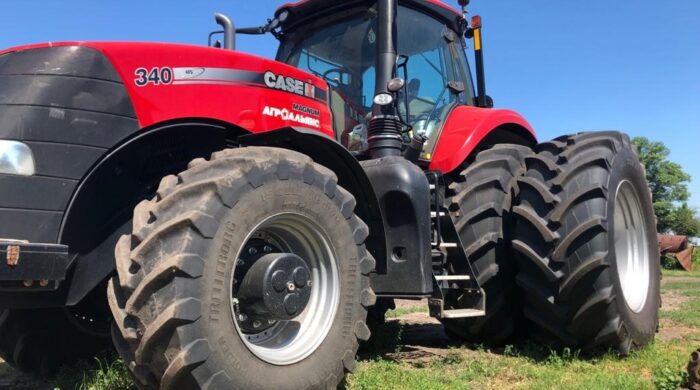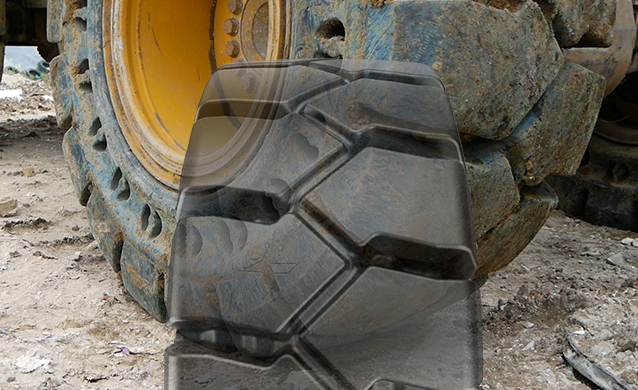MAXAM on Tire Tactics to Reduce Fuel Consumption
AG Technical Bulletin – Tire Tactics to Reduce Fuel Consumption
What Tire Tactics can producers use to Reduce Fuel Costs (Increasing Field Traction, Reducing Road Rolling Resistance) which tire products can further enhance, and how much savings can users anticipate?
Ag tires are the integral component that connects the farm machinery or vehicle to the ground whether working in the field or on the road. Over the last eighteen months, we have seen both fuel and fertilizer prices increase dramatically driving up the operational expenses of farmers and growers. Finding creative ways to manage the escalating fuel and other operational costs can reduce the impact of these expenses in any farming operation.
With the objective of finding ways to mitigate operational expenses to maximize profit and increase crop yields, MAXAM has put together the below table as a summary of suggested best practices or tactics that can help reduce the farmer or grower’s fuel expense:
| Best Practice | Suggested Activity | Expected Benefit or Result |
| Managing Tractor or Vehicle Weight (External Weights vs Tire Ballast) | Modern tractors are outfitted with wheel or suitcase weights designed to adjust the axle loads to achieve the best possible setup based on the towed implement’s weight. Wherever possible avoid using water or liquid ballast in the tires as this creates additional weight and greater rolling resistance. | By ensuring the proper weight set up of suitcase or wheel weights for each type of tractor (2WD – MFWD – 4WD) operators can reduce tire slippage, reduce soil compaction, and reduce rolling resistance which will lower fuel consumption and improve overall machine efficiency delivering fuel savings. |
| Managing the Tire Slippage or Slip Rate | Most tractors have an onboard slip meter to measure the amount of tire slippage that impacts the utilization of the tractor and the resultant fuel consumption by managing the optimal slip rate. | Optimized tractor slip rates will reduce fuel consumption per the below guidelines: 2WD Tractors = from 10% up to 15% Slip RateMFWD Tractors = from 8% up to 12% Slip Rate4WD Tractors = from 8% up to 10% Slip Rate |
| Managing Tire Inflation & Maintenance | The pressurized air in the tire cavity carries 80% of the axle or vehicle weight, therefore, air pressure management has a direct impact on how the machine operates. Adjusting the working air pressure by axle load will ensure the best possible tire footprint, reduce tire slip, and improve traction equaling improved fuel efficiency. New Machinery with onboard air pressure monitoring and inflation adjustment systems allows for constant air pressure optimization based on axle load or slip rate. | The pressurized air in the tire cavity carries 80% of the axle or vehicle weight. Underinflation or overinflation can increase fuel consumption by creating greater rolling resistance, whereas constantly managed air pressures either manually or through onboard inflation systems could save over 15% of your fuel consumption in 1 year by reducing slip which increases traction (tire footprint) resulting in improved productivity and fuel savings. |
| Changing or Managing Tire Technology | Moving from bias constructed tires to radial tires will improve your machine’s fuel productivity due to the increased tire footprint or contact patch providing greater traction | Radial tires due to their casing construction which acts like an independent suspension system will optimize the size of the tire footprint ensuring the best possible traction, reduced slip, and greater contact patch which can produce a minimum of 15% fuel savings in a one-year period. |
| Employ VF & D Speed Rated Tires | VF Tire Technology allows for 40% more load or 40% less air pressure for a given axle load In most cases, the rubber compounding of the VF technology includes D Rated or 40 mph capable rubber compounds. Using this technology effectively can allow you to improve your fuel efficiency due to the improved tire footprint delivers greater traction with less rubber rolling resistance | As machines continue to get heavier as axle loads and horsepower continues to evolve, VF Technology can offer the best possible tire footprint if optimized to the right air pressure based on its axle load. At the right air pressure, the D Rated rubber compounds designed for high speed and high loads will offer reduced rolling resistance without compromising traction or footprint ensuring improved fuel efficiency |
MAXAM’s continuing objective for 2022, and for the years to come is to deliver superior radial products in the right sizes, with the right load capabilities, that when operated at the right air pressure will deliver the value and fuel savings our customers expect from our tires. Backed by a world-class warranty program, MAXAM’s radial tires are manufactured to maximize performance, reduce compaction, and improve traction with superior stability resulting in increased productivity. Try the MAXAM advantage in your operations today!



